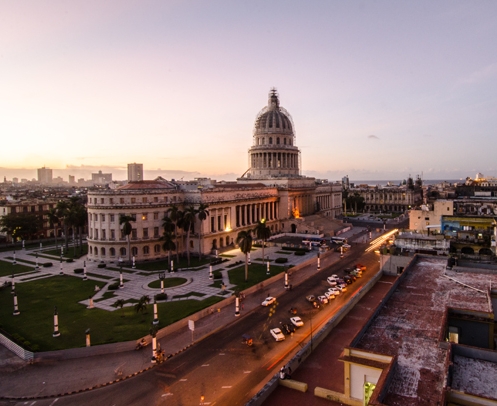Weekly Chart: The Cuba-Venezuela Oil Relationship
Weekly Chart: The Cuba-Venezuela Oil Relationship
As Petrocaribe’s top oil recipient, Cuba hurts when Venezuela hurts.
Frequent power outages and new government energy-saving measures have Cubans dreading the return of another “Special Period,” the era following the collapse of the USSR in 1991 that resulted in widespread scarcities from fuel to food across the island. The current scare comes in part from the fact that Cuba’s top trading partner, Venezuela, is going through its own special period—with shortages of everything.
The countries’ tight-knit relationship dates back to the friendship between former President Fidel Castro and the late Hugo Chávez, leading to a special services-for-oil trade deal in 2000. In exchange for the work of some 40,000 Cuban medical, education, and military professionals in Venezuela annually, the contract stipulates that Cuba receive more barrels of crude oil per day than any other country in Petrocaribe, Venezuela’s oil alliance with the Caribbean and other Latin American countries. Cuba’s quota stands at 98,000 barrels of oil per day, while the Dominican Republic, with the second highest amount, gets 30,000. But Venezuela’s economic woes have meant a 40 percent fall in average daily crude oil exports to Cuba in the first six months of 2016, compared to the same period last year. Meanwhile, most Cuban physicians in the South American country have returned home. Cuba produces about 38 percent of the crude oil needed to meet daily energy demands on its own, relying heavily on Venezuelan imports to cover the rest. With petroleum fueling 85 percent of Cuba’s electricity, the government announced it will cut the power supply by 25 percent for the rest of the year.
Here’s what that relationship entails in numbers.









